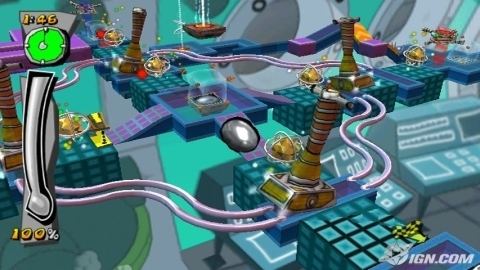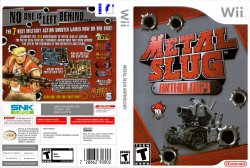

This required precision tilting of the world so that both blobs moved in sync, and this was more intuitive with the Wii Remote than it previously felt with an analogue stick.Īnother level showed off the multiple colour-changing requirements the game can throw at you.
MERCURY MELTDOWN REVOLUTION WII GAME COVER PSP
One level we played, which will be familiar to anyone who has played the PSP or PS2 versions, had an X-shaped barrier in the middle we had to manoeuvre two different-coloured blobs to arrive simultaneously on their (colour-specific) finishing points. We did try playing one-handed, for novelty's sake, but we did not have the time that was required for more practice. A reasonably steady hand is required to keep the mercury on track, and getting distracted can easily have level-failing consequences. You can also view the board in a free-roaming mode to get a good look at the path you need to follow, which is something that was missing from earlier versions of the game. The D pad also rotates the camera angle so that you can see the board from all sides, which is necessary to see around obstacles or plan your path. The 1 and 2 buttons are used to zoom the camera in and out. Although precision can be tricky, it feels as though you are in control of the world and that any failure to get the mercury where it is supposed to be is utterly your own fault. After a few minutes of playing, using the controller this way seems completely natural. To move your blob, you tilt the Wii Remote in the direction you want the gameworld to move, and your blob responds by rolling the same way. As a controller, it seems very well suited to MMR's gameplay you hold it sideways, with the D pad on the left.

We played through about five levels using the Wii Remote. While you can use the Wii's classic controller if you want, it's far more rewarding to use the motion-sensing Wii Remote. It sounds complex, but actually it's pretty easy to pick up once you start playing. If you tilt the world too far or too little, your mercury can fall off the edges (or leak out through gaps), which means that you have to start the level all over again. You'll need to use "paint shops" for changing colours and merging colours (a handy guide is always onscreen), unlock gates, split the blob and control the pieces separately, solidify the mercury to run along rails, deal with gravity-reversing sections, and much more. You gain extra points for finishing within the target time and with the maximum amount of mercury (tracked via a test tube on the left of the screen), as well as for picking up the 2,000-point bonuses that are placed around the worlds.

However, the challenge of the game exists in the obstacles that lie between your mercury and the chequered flag at the end of each world, as well as in keeping your mercury on the world itself. The basic gameplay of Mercury Meltdown remains unchanged in the Wii version you are in control of a blob (or blobs) of liquid mercury and must guide it/them safely through each level by tilting the world and letting gravity do its thing. We recently got an opportunity to play a preview build of the game at Nintendo's "Wii House" in London. The game was originally intended to be a launch title, but a lack of development hardware has meant that it's now scheduled for a March release in Europe. UK-based Ignition Entertainment is now bringing the liquid-metal-based puzzler, in the form of Mercury Meltdown Revolution, to the Nintendo Wii.
MERCURY MELTDOWN REVOLUTION WII GAME COVER PORTABLE
Mercury Meltdown, the follow-up to the PlayStation Portable launch title Mercury, established itself as a successful puzzle game on the handheld and was ported as Mercury Meltdown Remix to the PlayStation 2.


 0 kommentar(er)
0 kommentar(er)
